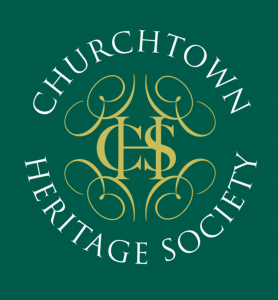“Cillin”
This was a place where unbaptised babies were buried in the past. These would have been premature and children born out of wedlock. Suicide victims would also have been included. The Cillin would usually be a disused church, a gable of an old ruin would also have been used, an area close to a cemetery wall or an entrance was also another option, and a ploughed field was sometimes the resting place for a premature infant. But the Cillin was the most used burial place.
The question is why these places were used. In the past the church did not give unbaptised persons a Christian burial. Suicide victims would also come under this category. The description given to infants who were buried was not babies. The term used was ‘little bundles’.
We must assume that the parents were anxious to bury their dead ones as close as possible to a holy spot, but were prevented by the Laws of the Church from using concreted (should this be ‘consecrated’ ?) ground, so a disused Church ruin was considered a suitable spot. Another feature of these sites were their location; a boundary between parishes was common, a stream or a river was also an influencing factor. This could be seen as a type of Limbo situation in between parishes, a type of ‘no man’s land’.
The burials were secretive in nature. They were done in the hours of darkness. In some areas a spoon was buried with the body. This would appear to be a pre-Christian custom. There would be many such burials and indeed most families would have one at some time. It is natural that many may not like to speak of these circumstances publicly.
The name of the field is ‘Paircin na Cille’. It is believed that an old Church or monastery stood in the spot. This could date back as far as the 7th Century.
Today the Church and the people in general treat these matters in a different manner. We would like to give recognition to those who are buried here and remember them in a Christian way and acknowledge the grief suffered by their parents in the past.
There is an infant from this parish buried in a Protestant cemetery.
A quotation from the poem the ‘Innoncents’, which describes these nameless souls:
I do believe these nameless souls
That God enfolds shall brightest shine
His timeless glory to portray
Around his sacred throne divine.
In Freemount parish a commemoration ceremony took place in a Cillin. Donnacha O’Dualing planted an oak tree in the spot. This was also a place where O’Sullivan Beare was attached by the McCarthy’s.
Vale Star, Thursday 31st. May, 2001.
Feature: Special Ceremony at Paircin Na Cille
On Sunday last (27/5/2001) in the townland of Mount Bridget a very special ceremony took place. The purpose was to mark the site, where in the past, burials of unbaptised infants took place. On the entrance to the site is an inscribed plaque to explain the importance of the history of the cillin. This is the term used to describe the burial ground of these souls.
Inside in the field, which is known locally as Paircin Na Cille, are some stones on a mound with a whitethorn tree. This was once a building but, with the ravages of time, there is very little left to see. As the name suggests, it was a monastery or a Church. The older people associated Mount Bridget with St. Colman, patron saint of this diocese. It was also called “The Field of the Innocents”. Mr. Denis Power visited the area some weeks ago. He is attached to the National Monuments and agreed it was a very old ruin and it would be a very likely site for burials.
The ceremony began with a hymn and a brief description on the outline of the plot. This was followed by a very special talk from Father Twohig, on the history of these burial grounds. Mrs. Mary Merritt and her daughter Ann unveiled the stone. It was a very moving ceremony. A bunch of wild flowers was then placed at the stone. Father Twohig then blessed the area. Hymns were sung and a decade of the Rosary recited.
Historian Jim O’Keeffe gave a very touching talk on a still-born death in his own family. He said he was very moved by the ceremony and he congratulated Fr. Twohig on his positive attitude towards those who lie buried. He mentioned that his people were evicted from Churchtown during Famine times. He will remember those buried each time he visits Churchtown.
Mrs. Mary Merritt spoke and said when she first told of the blessing of the field she had deep thoughts of the past. She also revealed that there was a burial of her own family which took place on the plot many years ago. She said it was very emotional for her to say this.
A poem called “The Innocents” was read by Noel Linehan. This was followed by another hymn and next was the unveiling of the descriptive plaque at the entrance to the field. This was done by Mrs. Mary O’Brien from Newtownshandrum, formerly from this townland. There was a word of thanks for the Merritt family for their agreement and co-operation with the organising of the ceremony, appreciation for the choir. The Daly family were also thanked for their valuable help and co-operation in having the field in perfect order for the day. The evening concluded with tea in the Community Centre. Thanks to John Sampson for the disinfectant facilities and ensuring safety on the site.




